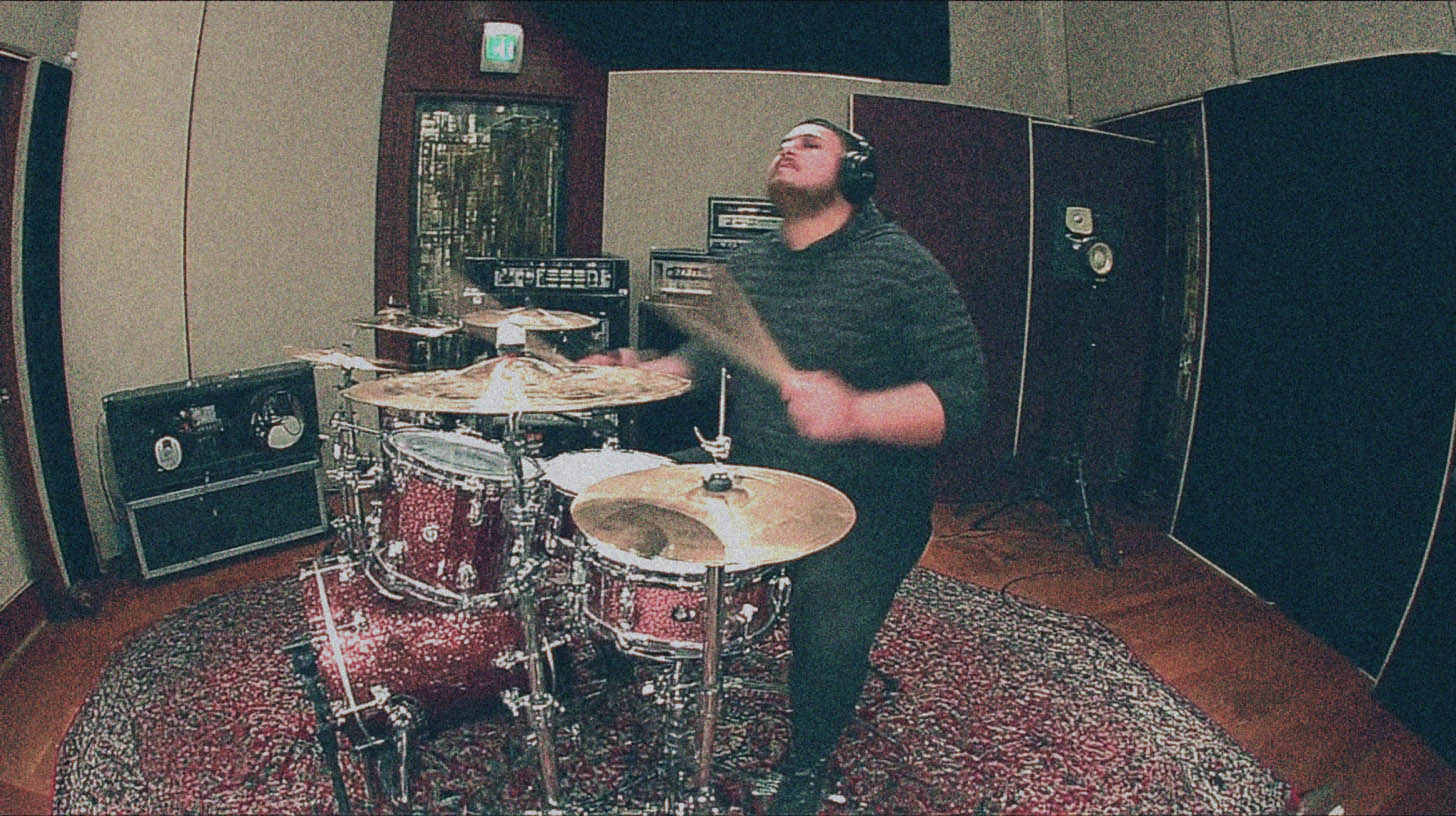
Mastering Suicide Silence: Pro Tricks for Clarity, Punch, and Power
Nail The Mix Staff
Getting a metal mix to sound loud, aggressive, and polished without turning it into a squashed, lifeless mess is one of the biggest challenges in modern production. Nowhere is that challenge greater than with a band like Suicide Silence, whose sound is built on pure, unadulterated sonic assault.
How do the pros tackle this? We got a chance to see two different world-class producers, including the legendary Machine, put their spin on the same Suicide Silence track. They shared some killer mastering bus techniques you can use to add punch, clarity, and professional excitement to your own heavy mixes. Let’s dive into their distinct approaches.
Machine’s Approach: Preserving Punch with Parallel Processing
Machine’s philosophy centers on solving a problem every metal mixer has faced: you get your mix sounding perfect, then you slap on your mastering limiters to get it loud, and suddenly your snare drum vanishes, pushed back into the wash of guitars. His solution is elegant and powerful.
The “Total Outsides” Bus: Your Secret Weapon Against Squashed Snares
The core of Machine’s technique is a clever routing strategy he calls the “Total Outsides” bus. Instead of sending every single track to one main mix bus to be processed, he creates a secondary bus that completely bypasses the main bus compression.
Here’s the concept:
- Your main mix bus has your typical processing—some EQ, stereo widening, and that crucial “glue” compression that brings everything together.
- Any element that gets weakened by that compression (like the snare) gets sent to the “Total Outsides” bus as well.
- Both the main bus and the “Outsides” bus then feed into the final mastering limiter.
By doing this, you can blend in a clean, uncompressed version of your snare. It allows the transient to hit the final limiter hard, retaining all of its crack and punch while the rest of the mix gets the cohesive glue from the main bus compression. It’s a brilliant way to have your cake and eat it too.
Crafting Width and Subtle Excitement on the Master
Beyond the routing trick, Machine’s master bus chain is all about subtle, smart enhancements.
Stereo Width with Brainworx bx_digital
For adding width and space, Machine reaches for the Brainworx bx_digital V3. He uses its powerful Mid/Side EQ capabilities to process the center and the sides of the mix independently. This allows you to widen the stereo field by boosting the “side” information without making the core of your mix—the kick, snare, bass, and vocals—sound thin or weird.
The 1% Distortion Trick with Soundtoys Radiator
This is a seriously cool and subtle trick. Machine inserts the Soundtoys Radiator, a tube distortion and preamp emulator, across his entire mix. But instead of cranking it, he sets the mix knob to just 1%.
The effect is almost subliminal. It’s not about adding audible grit or fuzz. Instead, this tiny layer of harmonic distortion adds a layer of presence and perceived excitement that makes the whole mix feel a little more alive and energetic. It’s a perfect example of how a “crazy” distortion plugin can be used with incredible subtlety for a professional sheen.
Adding That Final Sheen with an “Air Band”
To get that final bit of polish and loudness, Machine leans on an EQ with a high-frequency “Air Band,” like the popular Maag EQ4. This type of EQ allows you to boost the very top-end frequencies in a musical way, opening up the mix and giving it that expensive-sounding clarity without adding harshness.
The Second Master: A Fast-and-Dirty Approach to Finding Clarity
The second producer’s approach is less about complex routing and more about a rapid-fire workflow designed to quickly diagnose a mix’s core problems. His main goal is to combat that “claustrophobic” feeling a mix can get after you’ve listened to it for hours on end.
Using a Mastering Preset as a Diagnostic Tool
Ever feel like your mix is too dark or muddy but can’t figure out why? Try this. This producer throws a mastering suite like IK Multimedia T-RackS on his master fader and pulls up a preset like “Loud and Clear.”
The goal isn’t to use the preset as the final master. Instead, it’s a diagnostic tool. By instantly hearing an aggressively bright and loud version of your track, you can immediately tell what your mix is missing. Maybe it reveals a lack of “air” or shows that your guitars need more bite. It’s a quick A/B test that breaks you out of ear fatigue and points you in the right direction.
From Diagnosis to Action: EQing the Mix
Once the preset has revealed the mix’s weaknesses, the real work begins. If the T-RackS version suddenly has a clarity your mix was missing, it’s a sign you need to go back to your individual tracks or busses and add that top-end yourself.
This approach also helps you find and tame “nasty” resonant frequencies. The heavy compression and limiting of the preset will exaggerate any harshness, making it easy to identify and notch out with a surgical EQ. The key is to use the loud, smashed version as a guide to improve the core mix itself.
The Final Judgment: Taste, Reference, and Taking a Break
Ultimately, both producers highlight that mastering is a matter of taste. The second engineer brings up a great point: are you going for a raw, gritty “Dismember type sound,” or a polished “American smooth metalcore” vibe? An aggressive EQ boost that works for one might ruin the other.
This is where the most crucial tip of all comes in: walk away. After you think you’ve nailed the master, bounce the track. Listen to it on your phone, in your car, or on your laptop speakers in a few hours. That fresh perspective will immediately tell you if you went too far. As he puts it, even too much of a good thing can be horrible.
See How It’s Really Done
These mastering philosophies are incredible starting points for elevating your own tracks. But seeing how to balance a parallel snare, dial in that 1% distortion, and surgically EQ a mix in the context of a full session is a complete game-changer.
Suicide Silence on Nail The Mix
Machine mixes "Wake Up"
Get the Session
That’s exactly what we do at Nail The Mix. We put you in the virtual studio with the world’s best producers as they mix massive songs from scratch. You get the real multitracks to practice on and can watch them explain every plugin, setting, and decision. If you want to see precisely how pros like Machine build a mix worthy of a band like Suicide Silence, you can get the full session and multitracks right here: Suicide Silence’s “Wake Up” Session.
Ready to go beyond presets and start crafting pro-level mixes? Explore our tutorials and resources to unlock your sound. Stop guessing and start learning the techniques that actually work, directly from the producers who created the albums you love. Check out the full Suicide Silence mixing session today.
Get a new set of multi-tracks every month from a world-class artist, a livestream with the producer who mixed it, 100+ tutorials, our exclusive plugins and more
Get Started for $1






